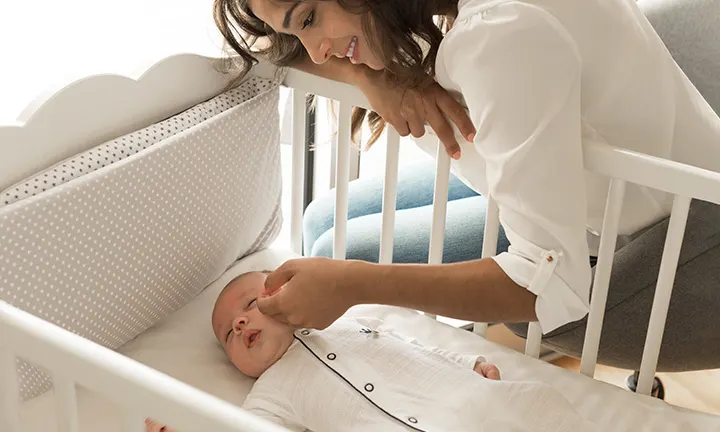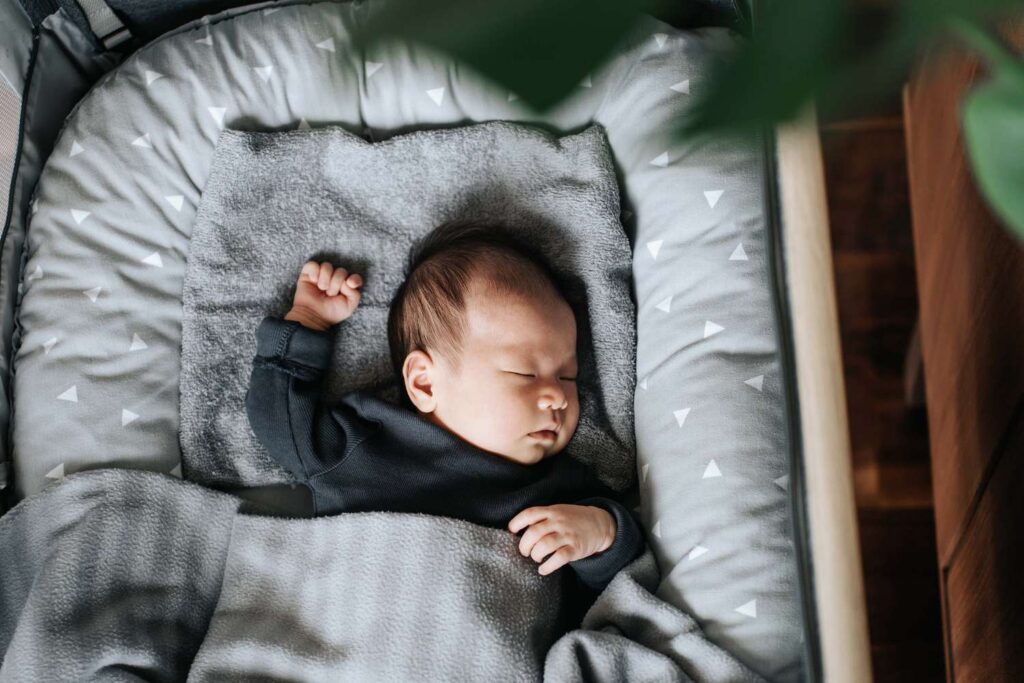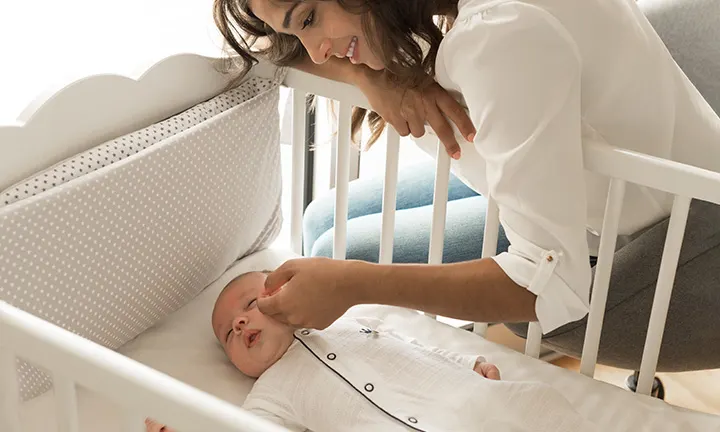Creating a safe sleep environment for your baby is crucial for their health and well-being. Ensuring your baby sleeps safely reduces the risk of Sudden Infant Death Syndrome (SIDS) and other sleep-related hazards. This article provides comprehensive guidelines to help parents establish a safe and nurturing sleep environment for their little ones.
Understanding Safe Sleep
Safe sleep involves practices that ensure a baby sleeps in a secure and hazard-free environment. It includes choosing the right sleep surfaces, positioning the baby correctly, and maintaining a safe sleep area. The benefits of a safe sleep environment include reduced risks of SIDS, suffocation, and other sleep-related accidents, providing peace of mind for parents and caregivers.

SIDS and Safe Sleep
Sudden Infant Death Syndrome (SIDS) is the sudden, unexplained death of an otherwise healthy infant, usually during sleep. Understanding SIDS and its risk factors is vital for prevention. Safe sleep practices, such as placing babies on their backs to sleep and using a firm sleep surface, significantly reduce the risk of SIDS.
Choosing the Right Crib
Choosing a crib that meets safety standards is the first step in creating a safe sleep environment. Look for cribs that comply with the Consumer Product Safety Commission (CPSC) regulations. Ensure the crib has a firm mattress that fits snugly without gaps and avoid drop-side cribs, which are considered unsafe.
Safe Sleep Surfaces
A firm mattress is essential for safe sleep. Avoid soft surfaces like couches or adult beds, which increase the risk of suffocation. Approved sleep surfaces include cribs, bassinets, and portable play yards. These should have a flat, firm mattress covered with a fitted sheet.
Bedding and Sleepwear
Safe bedding practices are crucial to preventing sleep-related hazards. Use a fitted sheet on the crib mattress and avoid pillows, blankets, and stuffed animals. Dress your baby in appropriate sleepwear, such as a onesie or sleep sack, to prevent overheating. The room temperature should be comfortable, not too hot or cold.
Room Sharing vs. Bed Sharing
Room sharing, where the baby sleeps in the same room but in a separate sleep space, is recommended for at least the first six months. It reduces the risk of SIDS by allowing close monitoring. Bed sharing, where the baby sleeps in the same bed as the parents, poses significant risks, including suffocation and entrapment. If bed sharing, follow strict safety guidelines to minimize risks.
Positioning Your Baby
Always place your baby on their back to sleep, as this position reduces the risk of SIDS. Avoid side and stomach sleeping. If swaddling your baby, ensure it’s done safely to prevent hip dysplasia and keep the baby from rolling over onto their stomach.
Creating a Safe Sleep Environment
An ideal sleep environment is quiet, dimly lit, and at a comfortable temperature. Use white noise machines to mask household noises and blackout curtains to maintain a consistent sleep setting. Avoid using soft objects and toys in the sleep area to minimize suffocation risks.
Using Sleep Aids Safely
Pacifiers can reduce the risk of SIDS, but should be used without strings or clips. Sleep sacks and wearable blankets are safer alternatives to loose blankets. While baby monitors provide peace of mind, they should not replace direct supervision.
Avoiding Sleep Hazards
Common sleep hazards include loose bedding, bumper pads, and soft toys. Baby-proof the sleep area by removing potential dangers and ensuring the crib meets current safety standards. Safe crib accessories are minimal, focusing on functionality over decoration.
Breastfeeding and Safe Sleep
Breastfeeding has been shown to reduce the risk of SIDS. Practice safe breastfeeding by ensuring the baby is placed back in their crib after feeding. Nighttime feeding should be done in a safe, comfortable position for both mother and baby.
Traveling with Your Baby
Maintaining safe sleep practices while traveling is essential. Use portable cribs or bassinets that meet safety standards. Try to keep sleep routines consistent and ensure the sleep environment is safe and familiar.
Addressing Common Sleep Issues
Newborns often have irregular sleep patterns. Understanding these patterns and addressing common issues like sleep regressions and disturbances helps maintain a safe sleep routine. Create a consistent bedtime routine to ease your baby into sleep.
Creating a Consistent Sleep Routine
Establishing a sleep routine helps your baby recognize sleep cues. Bedtime rituals like a warm bath, gentle rocking, and a lullaby can signal it’s time to sleep. Adapt routines as your baby grows and their needs change.

Monitoring Your Baby’s Sleep
Monitoring your baby’s sleep ensures they are safe and comfortable. Use baby monitors to keep an eye on your baby while they sleep. Regularly check on your baby and know when to seek medical advice if sleep issues arise.
Safe Sleep for Multiples
Twins and multiples require special considerations for safe sleep. Each baby should have their own sleep space to reduce the risk of suffocation. Coordinating sleep schedules and ensuring a safe environment for each baby is crucial.
Dealing with Sleep Challenges
Sleep training methods can help establish good sleep habits. Handle night wakings by comforting your baby without disrupting their sleep routine. Encourage self-soothing techniques to help your baby learn to fall asleep independently.
Postpartum Sleep for Parents
Parental sleep is equally important. Share nighttime duties with your partner and take naps when your baby sleeps. Prioritize your rest to ensure you’re well-rested and able to care for your baby effectively.
Legal and Regulatory Information
Stay informed about safe sleep regulations and guidelines. Keep up with product recalls and safety alerts related to baby sleep products. Advocate for safe sleep practices within your community.
Community and Support Resources
Join support groups for parents to share experiences and gain advice on safe sleep practices. Access community resources and online forums for additional support and education.
Cultural Practices and Safe Sleep
Cultural practices around sleep vary, but safety should always be a priority. Balance cultural traditions with modern safety guidelines and educate family members about safe sleep practices.
Final Thoughts and Encouragement
Reflect on the importance of creating a safe sleep environment for your baby. Continue to practice and advocate for safe sleep habits, ensuring your baby’s health and safety. Celebrate each milestone and look forward to the journey ahead.










